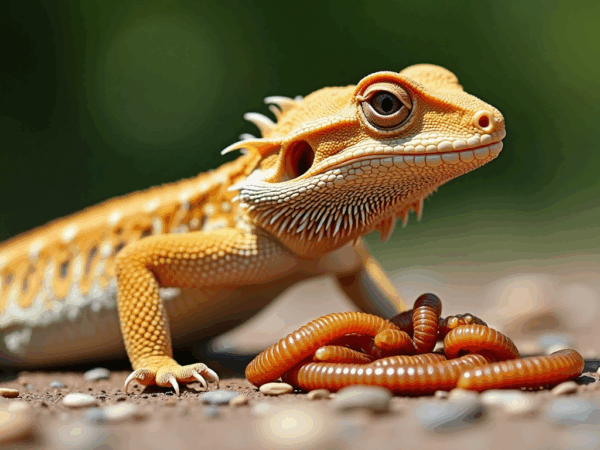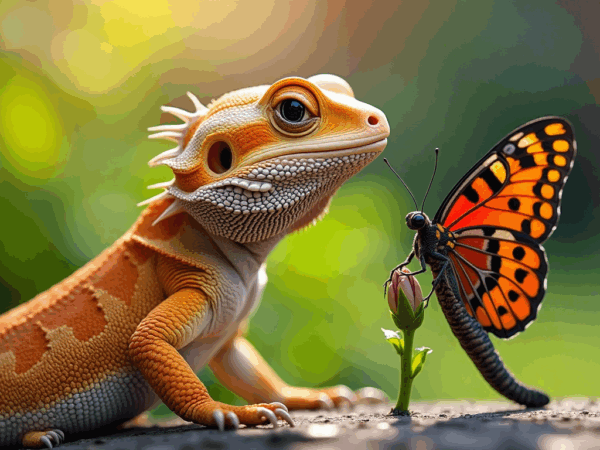WP_Query Object
(
[query] => Array
(
[post_type] => topic
[post_parent] => any
[meta_key] => _bbp_last_active_time
[meta_type] => DATETIME
[orderby] => meta_value
[order] => DESC
[posts_per_page] => 8
[paged] => 1
[show_stickies] => 1
[max_num_pages] =>
[update_post_family_cache] => 1
[perm] => readable
)
[query_vars] => Array
(
[post_type] => topic
[post_parent] => any
[meta_key] => _bbp_last_active_time
[meta_type] => DATETIME
[orderby] => meta_value
[order] => DESC
[posts_per_page] => 8
[paged] => 1
[show_stickies] => 1
[max_num_pages] =>
[update_post_family_cache] => 1
[perm] => readable
[error] =>
[m] =>
[p] => 0
[subpost] =>
[subpost_id] =>
[attachment] =>
[attachment_id] => 0
[name] =>
[pagename] =>
[page_id] => 0
[second] =>
[minute] =>
[hour] =>
[day] => 0
[monthnum] => 0
[year] => 0
[w] => 0
[category_name] =>
[tag] =>
[cat] =>
[tag_id] =>
[author] =>
[author_name] =>
[feed] =>
[tb] =>
[meta_value] =>
[preview] =>
[s] =>
[sentence] =>
[title] =>
[fields] => all
[menu_order] =>
[embed] =>
[category__in] => Array
(
)
[category__not_in] => Array
(
)
[category__and] => Array
(
)
[post__in] => Array
(
)
[post__not_in] => Array
(
)
[post_name__in] => Array
(
)
[tag__in] => Array
(
)
[tag__not_in] => Array
(
)
[tag__and] => Array
(
)
[tag_slug__in] => Array
(
)
[tag_slug__and] => Array
(
)
[post_parent__in] => Array
(
)
[post_parent__not_in] => Array
(
)
[author__in] => Array
(
)
[author__not_in] => Array
(
)
[search_columns] => Array
(
)
[ignore_sticky_posts] =>
[suppress_filters] =>
[cache_results] => 1
[update_post_term_cache] => 1
[update_menu_item_cache] =>
[lazy_load_term_meta] => 1
[update_post_meta_cache] => 1
[nopaging] =>
[comments_per_page] => 50
[no_found_rows] =>
)
[tax_query] => WP_Tax_Query Object
(
[queries] => Array
(
)
[relation] => AND
[table_aliases:protected] => Array
(
)
[queried_terms] => Array
(
)
[primary_table] => wp_posts
[primary_id_column] => ID
)
[meta_query] => WP_Meta_Query Object
(
[queries] => Array
(
[0] => Array
(
[key] => _bbp_last_active_time
[type] => DATETIME
)
[relation] => OR
)
[relation] => AND
[meta_table] => wp_postmeta
[meta_id_column] => post_id
[primary_table] => wp_posts
[primary_id_column] => ID
[table_aliases:protected] => Array
(
[0] => wp_postmeta
)
[clauses:protected] => Array
(
[wp_postmeta] => Array
(
[key] => _bbp_last_active_time
[type] => DATETIME
[compare] => =
[compare_key] => =
[alias] => wp_postmeta
[cast] => DATETIME
)
)
[has_or_relation:protected] =>
)
[date_query] =>
[request] => SELECT SQL_CALC_FOUND_ROWS wp_posts.ID
FROM wp_posts INNER JOIN wp_postmeta ON ( wp_posts.ID = wp_postmeta.post_id )
WHERE 1=1 AND (
wp_postmeta.meta_key = '_bbp_last_active_time'
) AND ((wp_posts.post_type = 'topic' AND (wp_posts.post_status = 'publish' OR wp_posts.post_status = 'closed' OR wp_posts.post_status = 'acf-disabled')))
GROUP BY wp_posts.ID
ORDER BY CAST(wp_postmeta.meta_value AS DATETIME) DESC
LIMIT 0, 8
[posts] => Array
(
[0] => WP_Post Object
(
[ID] => 234
[post_author] => 6
[post_date] => 2019-01-20 08:46:25
[post_date_gmt] => 2019-01-20 13:46:25
[post_content] => The Critter Forum is a place where new and experienced pet owners can post pictures, habitat guides, questions, and tips about all things related to pets. We all want the same thing: good health and happiness for our pets. So let's keep this place friendly, constructive, and supportive by following some basic rules:
- We encourage you to post these pet related things: pictures, habitats, questions, and anything else pet related.
- The Critter Forum is for all ages. Absolutely no adult content. Users will be banned and reported.
- Be kind. Everyone here wants to learn, and become better care givers for their pets. Help others by sharing tips, knowledge, products, and tutorial videos.
- Be respectful of other people’s opinions and ideas. It’s okay to disagree and have different opinions, but present your case tactfully. Everyone here wants the same thing: good health and happiness for their pet.
- No brigading or trolling. Everyone wants to be an amazing pet-parent. Rude remarks, trolling, and brigading doesn't encourage this, and discourages everyone from participating and learning.
- All posts must be relevant to the selected category. For example, don’t discuss corn snakes on the bearded dragon category.
- All threads that are nothing but a ‘test’ or an ‘ad’ will be deleted.
- If you share irrelevant links, your comment or post will be deleted. If the links are relevant to the thread, that’s fine. Please use your best judgment here.
- Please don’t use affiliate links in this forum. When you externally link, do it because you want to help someone, not because you see a quick opportunity to make some cash.
- Try to add value when you post. Don’t just type something along the lines of “What they said.”
- Use proper grammar to the best of your ability. We understand that English may not be everyone’s main language, but make an attempt. You won’t get in trouble for a misplaced comma or for typos, but it would help everyone if you could make sure everyone understands your message.
[post_title] => House Rules
[post_excerpt] =>
[post_status] => publish
[comment_status] => closed
[ping_status] => open
[post_password] =>
[post_name] => house-rules
[to_ping] =>
[pinged] =>
[post_modified] => 2021-02-01 07:53:14
[post_modified_gmt] => 2021-02-01 12:53:14
[post_content_filtered] =>
[post_parent] => 177
[guid] => https://critterfam.com/forums/topic/house-rules/
[menu_order] => 0
[post_type] => topic
[post_mime_type] =>
[comment_count] => 0
[filter] => raw
)
[1] => WP_Post Object
(
[ID] => 109913
[post_author] => 286690
[post_date] => 2025-06-23 14:11:54
[post_date_gmt] => 2025-06-23 18:11:54
[post_content] => Bearded dragons might need some extra help to regulate their body temperatures in the summer. The daytime temperature on your beardy’s basking rock should be between 95° and 110°, never exceeding 115° F. The cool side of the habitat should be 77°-85° during the day. At night, you should reduce the temps to 55°-75°. They can’t sweat or shiver like mammals do- they need the sun to keep them warm and shade or water to cool them back off. A few strategies for keeping the enclosure cool include rearranging heating elements and hides, misting and bathing, and climate controlling the room your beardy is in. For all the details, check out our full write-up here.
[post_title] => How Should I Adjust My Bearded Dragon Husbandry for Summer?
[post_excerpt] =>
[post_status] => publish
[comment_status] => closed
[ping_status] => closed
[post_password] =>
[post_name] => how-should-i-adjust-my-bearded-dragon-husbandry-for-summer
[to_ping] =>
[pinged] =>
[post_modified] => 2025-06-23 14:11:54
[post_modified_gmt] => 2025-06-23 18:11:54
[post_content_filtered] =>
[post_parent] => 64
[guid] => https://critterfam.com/forums/topic/how-should-i-adjust-my-bearded-dragon-husbandry-for-summer/
[menu_order] => 0
[post_type] => topic
[post_mime_type] =>
[comment_count] => 0
[filter] => raw
)
[2] => WP_Post Object
(
[ID] => 109912
[post_author] => 277447
[post_date] => 2025-06-23 08:20:35
[post_date_gmt] => 2025-06-23 12:20:35
[post_content] => Students across all academic levels are facing more pressure than ever—from complex assignments to tighter deadlines. With coursework piling up and expectations increasing, many learners are exploring smarter ways to manage their academic responsibilities. One of the most practical solutions is using an essay writing service that understands their challenges and delivers real academic value.
A Smarter Option: Go to EssayProfy
For those looking for a reliable and intuitive experience, Go to EssayProfy. This platform, known simply as Essayprofy, stands out for offering thoughtful and custom-written essays that match academic standards without unnecessary stress. It’s more than just convenience—it’s about empowering students to focus on what matters most while receiving structured support on their academic journey.
Key Features That Make It Work
Tailored Content: Each essay is designed according to the unique specifications of the assignment.
Professional Writers: A team of skilled experts across multiple disciplines ensures quality results.
Timely Delivery: Whether you need a paper in three days or twelve hours, speed doesn’t compromise quality.
Support System: Clear communication channels and responsive service enhance the user experience.
Why Essay Writing Services Are More Than a Shortcut
Contrary to misconceptions, using a writing service isn’t about avoiding the work—it’s about managing workload effectively. For students juggling part-time jobs, internships, or personal responsibilities, having structured writing assistance can mean the difference between falling behind and staying ahead.
Final Thought
Academic pressure doesn’t have to lead to burnout. With dependable services like Essayprofy, students can approach their education strategically, using tools that enhance—not replace—their efforts. It's about working smarter, not harder, and choosing support that aligns with your goals.
[post_title] => Why Students Are Turning to Smarter Essay Writing Services Like EssayProfy
[post_excerpt] =>
[post_status] => publish
[comment_status] => closed
[ping_status] => closed
[post_password] =>
[post_name] => why-students-are-turning-to-smarter-essay-writing-services-like-essayprofy
[to_ping] =>
[pinged] =>
[post_modified] => 2025-06-23 08:20:35
[post_modified_gmt] => 2025-06-23 12:20:35
[post_content_filtered] =>
[post_parent] => 177
[guid] => https://critterfam.com/forums/topic/why-students-are-turning-to-smarter-essay-writing-services-like-essayprofy/
[menu_order] => 0
[post_type] => topic
[post_mime_type] =>
[comment_count] => 0
[filter] => raw
)
[3] => WP_Post Object
(
[ID] => 109911
[post_author] => 163467
[post_date] => 2025-06-18 09:38:24
[post_date_gmt] => 2025-06-18 13:38:24
[post_content] => In today’s competitive academic world, students often face the dual challenge of maintaining high grades while juggling part-time jobs, extracurricular activities, and personal responsibilities. For many, essay writing becomes a source of stress rather than a learning opportunity. This is where turning to a cheap essay writing service can be a strategic academic move—not for shortcuts, but for learning support.
Why Students Seek Essay Writing Help
Not every student finds essay writing easy. Language barriers, unfamiliar formats, tight deadlines, or even a lack of confidence can lead students to seek external assistance. While the term “cheap” might raise concerns, it doesn’t always mean poor quality. In fact, many services offer affordability without compromising academic standards.
Balancing Cost and Quality
The key is to identify services that balance affordability with reliability. Some platforms, like Myassignmenthelp.com, are widely recognized in student circles—not necessarily as the absolute cheapest, but as cheap essay writing service providers offering a range of pricing options that can suit different needs. Students typically look for guarantees of originality, timely delivery, and knowledgeable support, even when the price is low.
How These Services Support Learning
When used ethically, essay writing services can be educational tools. They allow students to see how a topic can be researched and structured, which can be especially useful for learners who struggle with academic writing. Reviewing a well-written paper can offer insights into citation styles, argument development, and clear communication.
Caution and Responsibility
It’s important for students to understand the ethical boundaries of using these services. The goal should not be to submit someone else’s work as their own, but to learn from the guidance provided. Always ensure the service aligns with institutional policies and personal academic integrity.
[post_title] => Unlock Academic Success with the Best Cheap Essay Writing Services
[post_excerpt] =>
[post_status] => publish
[comment_status] => closed
[ping_status] => closed
[post_password] =>
[post_name] => unlock-academic-success-with-the-best-cheap-essay-writing-services
[to_ping] =>
[pinged] =>
[post_modified] => 2025-06-18 09:38:24
[post_modified_gmt] => 2025-06-18 13:38:24
[post_content_filtered] =>
[post_parent] => 177
[guid] => https://critterfam.com/forums/topic/unlock-academic-success-with-the-best-cheap-essay-writing-services/
[menu_order] => 0
[post_type] => topic
[post_mime_type] =>
[comment_count] => 0
[filter] => raw
)
[4] => WP_Post Object
(
[ID] => 109904
[post_author] => 286690
[post_date] => 2025-06-06 14:46:42
[post_date_gmt] => 2025-06-06 18:46:42
[post_content] => If you’re looking for a quick answer on how much to feed your beardy, it’s just not that simple. There is a lot to take into account, including your pet’s age and the other things you’re feeding it. One of the critical things to know about what, and how, bearded dragons eat is that their diets change as they get older. Juveniles are much more carnivorous, chowing down on protein and energy-rich fat to promote growth. Another thing to know is that the size of your feeders should change with your pet. The rule of thumb for picking out feeder insects is that they should be as long as the space between your beardy’s eyes. For all the details, check out our full article.
[post_title] => How Many Mealworms Should I Feed My Bearded Dragon?
[post_excerpt] =>
[post_status] => publish
[comment_status] => closed
[ping_status] => closed
[post_password] =>
[post_name] => how-many-mealworms-should-i-feed-my-bearded-dragon
[to_ping] =>
[pinged] =>
[post_modified] => 2025-06-06 14:46:42
[post_modified_gmt] => 2025-06-06 18:46:42
[post_content_filtered] =>
[post_parent] => 64
[guid] => https://critterfam.com/forums/topic/how-many-mealworms-should-i-feed-my-bearded-dragon/
[menu_order] => 0
[post_type] => topic
[post_mime_type] =>
[comment_count] => 0
[filter] => raw
)
[5] => WP_Post Object
(
[ID] => 77042
[post_author] => 162165
[post_date] => 2023-01-01 23:15:58
[post_date_gmt] => 2023-01-02 04:15:58
[post_content] => My white tree frog, Zelda, refuses to eat while my other frog, Slippy, keeps eating Zelda's food. I got Zelda a yesterday and tried feeding her then and now. I have tried tong feeding and just dropping crickets in and she just sits there while Slippy either steals the cricket off the tongs or eats the ones around Zelda. I'm really worried that Zelda isn't eating. Do you maybe know how I can get her to eat and how to feed two frogs in the same tank? (The picture is of Zelda)
[post_title] => My frog, Zelda, refuses to eat
[post_excerpt] =>
[post_status] => publish
[comment_status] => closed
[ping_status] => closed
[post_password] =>
[post_name] => my-frog-zelda-refuses-to-eat
[to_ping] =>
[pinged] =>
[post_modified] => 2023-01-01 23:15:58
[post_modified_gmt] => 2023-01-02 04:15:58
[post_content_filtered] =>
[post_parent] => 69
[guid] => https://critterfam.com/forums/topic/my-frog-zelda-refuses-to-eat/
[menu_order] => 0
[post_type] => topic
[post_mime_type] =>
[comment_count] => 0
[filter] => raw
)
[6] => WP_Post Object
(
[ID] => 109897
[post_author] => 286690
[post_date] => 2025-05-29 21:07:18
[post_date_gmt] => 2025-05-30 01:07:18
[post_content] => Mealworms are one of the most popular options for exotic pet owners, but are they any good for bearded dragons? The short answer is yes, but there are always better (or more complete options). Bearded dragons need lots of things to make sure they have a balanced diet and no single feeder insect will keep your beardy healthy on its own. For the long answer, you need to look at what beardies need to stay healthy, what mealworms can offer, and how you can build a balanced diet for your bearded dragon. Check out our full write-up for all the details.
[post_title] => Are Mealworms Good for Bearded Dragons?
[post_excerpt] =>
[post_status] => publish
[comment_status] => closed
[ping_status] => closed
[post_password] =>
[post_name] => are-mealworms-good-for-bearded-dragons
[to_ping] =>
[pinged] =>
[post_modified] => 2025-05-29 21:07:53
[post_modified_gmt] => 2025-05-30 01:07:53
[post_content_filtered] =>
[post_parent] => 64
[guid] => https://critterfam.com/forums/topic/are-mealworms-good-for-bearded-dragons/
[menu_order] => 0
[post_type] => topic
[post_mime_type] =>
[comment_count] => 0
[filter] => raw
)
[7] => WP_Post Object
(
[ID] => 109894
[post_author] => 286690
[post_date] => 2025-05-18 20:35:18
[post_date_gmt] => 2025-05-19 00:35:18
[post_content] => Bearded dragons aren’t the most expensive pet out there. But you don’t want to cheap out and potentially risk your beardy’s health. The first thing you need to get is your bearded dragon itself, which can range from $80 to over $1,000 when buying from a reputable breeder. Then you need to factor in the cost of a habitat, care, and feeding. Check out our full article for the total calculation.
[post_title] => How Much Does it Cost to Own a Bearded Dragon?
[post_excerpt] =>
[post_status] => publish
[comment_status] => closed
[ping_status] => closed
[post_password] =>
[post_name] => how-much-does-it-cost-to-own-a-bearded-dragon-2
[to_ping] =>
[pinged] =>
[post_modified] => 2025-05-18 20:36:21
[post_modified_gmt] => 2025-05-19 00:36:21
[post_content_filtered] =>
[post_parent] => 64
[guid] => https://critterfam.com/forums/topic/how-much-does-it-cost-to-own-a-bearded-dragon-2/
[menu_order] => 0
[post_type] => topic
[post_mime_type] =>
[comment_count] => 0
[filter] => raw
)
[8] => WP_Post Object
(
[ID] => 109891
[post_author] => 286690
[post_date] => 2025-05-15 23:15:30
[post_date_gmt] => 2025-05-16 03:15:30
[post_content] => It’s natural to see a juicy-looking bug outside and think “I bet my bearded dragon would love that”. In the wild, you’re probably right. But it’s important to remember one key thing: nature is full of danger, and that’s why you should never feed wild insects to your pet. The biggest and most obvious problem with wild insects is that they carry parasites. Crickets are also prone to a whole host of diseases, some of which can be passed on to reptile pets. For the full details, check out our write-up on wild feeding here.
[post_title] => Never Feed Wild Crickets to your Pet
[post_excerpt] =>
[post_status] => publish
[comment_status] => closed
[ping_status] => closed
[post_password] =>
[post_name] => never-feed-wild-crickets-to-your-pet
[to_ping] =>
[pinged] =>
[post_modified] => 2025-05-15 23:15:30
[post_modified_gmt] => 2025-05-16 03:15:30
[post_content_filtered] =>
[post_parent] => 177
[guid] => https://critterfam.com/forums/topic/never-feed-wild-crickets-to-your-pet/
[menu_order] => 0
[post_type] => topic
[post_mime_type] =>
[comment_count] => 0
[filter] => raw
)
)
[post_count] => 9
[current_post] => -1
[before_loop] => 1
[in_the_loop] =>
[post] => WP_Post Object
(
[ID] => 109913
[post_author] => 286690
[post_date] => 2025-06-23 14:11:54
[post_date_gmt] => 2025-06-23 18:11:54
[post_content] => Bearded dragons might need some extra help to regulate their body temperatures in the summer. The daytime temperature on your beardy’s basking rock should be between 95° and 110°, never exceeding 115° F. The cool side of the habitat should be 77°-85° during the day. At night, you should reduce the temps to 55°-75°. They can’t sweat or shiver like mammals do- they need the sun to keep them warm and shade or water to cool them back off. A few strategies for keeping the enclosure cool include rearranging heating elements and hides, misting and bathing, and climate controlling the room your beardy is in. For all the details, check out our full write-up here.
[post_title] => How Should I Adjust My Bearded Dragon Husbandry for Summer?
[post_excerpt] =>
[post_status] => publish
[comment_status] => closed
[ping_status] => closed
[post_password] =>
[post_name] => how-should-i-adjust-my-bearded-dragon-husbandry-for-summer
[to_ping] =>
[pinged] =>
[post_modified] => 2025-06-23 14:11:54
[post_modified_gmt] => 2025-06-23 18:11:54
[post_content_filtered] =>
[post_parent] => 64
[guid] => https://critterfam.com/forums/topic/how-should-i-adjust-my-bearded-dragon-husbandry-for-summer/
[menu_order] => 0
[post_type] => topic
[post_mime_type] =>
[comment_count] => 0
[filter] => raw
)
[comment_count] => 0
[current_comment] => -1
[found_posts] => 1932
[max_num_pages] => 242
[max_num_comment_pages] => 0
[is_single] =>
[is_preview] =>
[is_page] =>
[is_archive] => 1
[is_date] =>
[is_year] =>
[is_month] =>
[is_day] =>
[is_time] =>
[is_author] =>
[is_category] =>
[is_tag] =>
[is_tax] =>
[is_search] =>
[is_feed] =>
[is_comment_feed] =>
[is_trackback] =>
[is_home] =>
[is_privacy_policy] =>
[is_404] =>
[is_embed] =>
[is_paged] =>
[is_admin] =>
[is_attachment] =>
[is_singular] =>
[is_robots] =>
[is_favicon] =>
[is_posts_page] =>
[is_post_type_archive] => 1
[query_vars_hash:WP_Query:private] => 67d4e366cdfa96d19257f7c68af10beb
[query_vars_changed:WP_Query:private] =>
[thumbnails_cached] =>
[allow_query_attachment_by_filename:protected] =>
[stopwords:WP_Query:private] =>
[compat_fields:WP_Query:private] => Array
(
[0] => query_vars_hash
[1] => query_vars_changed
)
[compat_methods:WP_Query:private] => Array
(
[0] => init_query_flags
[1] => parse_tax_query
)
[query_cache_key:WP_Query:private] => wp_query:bbc9981edfd318b5be2222a25cf02b1e:0.67471400 1751420118
[posts_per_page] => 8
[paged] => 1
[pagination_links] => 1
2
3
…
240
241
242
)
-
41
Favorite
House Rules
Read Post 26 comments Started ByCritterDepot
Everything Else | 26 comments | -
0
Favorite
 Read Post
0 comments
Started By
Read Post
0 comments
Started By  Conrad Lucas
Conrad Lucas
How Should I Adjust My Bearded Dragon Husbandry for Summer?
Bearded Dragons | 0 comments |Bearded dragons might need some extra help to regulate their body temperatures in the summer. The daytime temperature on your beardy’s basking rock should be between 95° and 110°, never…
-
0
Favorite
Why Students Are Turning to Smarter Essay Writing Services Like EssayProfy
Read Post 0 comments Started Bypeterjhonsonpj
Everything Else | 0 comments | -
0
Favorite
Unlock Academic Success with the Best Cheap Essay Writing Services
Read Post 0 comments Started Bykarsonpaul
Everything Else | 0 comments | -
1
Favorite
 Read Post
0 comments
Started By
Read Post
0 comments
Started By  Conrad Lucas
Conrad Lucas
How Many Mealworms Should I Feed My Bearded Dragon?
Bearded Dragons | 0 comments |If you’re looking for a quick answer on how much to feed your beardy, it’s just not that simple. There is a lot to take into account, including your pet’s age and the other things you’re…
-
0
Favorite
 Read Post
6 comments
Started By
Read Post
6 comments
Started By  chai_tea__
chai_tea__
My frog, Zelda, refuses to eat
Frogs - Pixies, Pacmans, & More! | 6 comments |My white tree frog, Zelda, refuses to eat while my other frog, Slippy, keeps eating Zelda’s food. I got Zelda a yesterday and tried feeding her then and now. I have tried tong feeding and…
-
0
Favorite
 Read Post
0 comments
Started By
Read Post
0 comments
Started By  Conrad Lucas
Conrad Lucas
Are Mealworms Good for Bearded Dragons?
Bearded Dragons | 0 comments |Mealworms are one of the most popular options for exotic pet owners, but are they any good for bearded dragons? The short answer is yes, but there are always better (or more complete options).…
-
0
Favorite
 Read Post
0 comments
Started By
Read Post
0 comments
Started By  Conrad Lucas
Conrad Lucas
How Much Does it Cost to Own a Bearded Dragon?
Bearded Dragons | 0 comments |Bearded dragons aren’t the most expensive pet out there. But you don’t want to cheap out and potentially risk your beardy’s health. The first thing you need to get is your bearded dragon…
-
0
Favorite
 Read Post
0 comments
Started By
Read Post
0 comments
Started By  Conrad Lucas
Conrad Lucas
Never Feed Wild Crickets to your Pet
Everything Else | 0 comments |It’s natural to see a juicy-looking bug outside and think “I bet my bearded dragon would love that”. In the wild, you’re probably right. But it’s important to remember one key thing:…
(adsbygoogle = window.adsbygoogle || []).push({});
